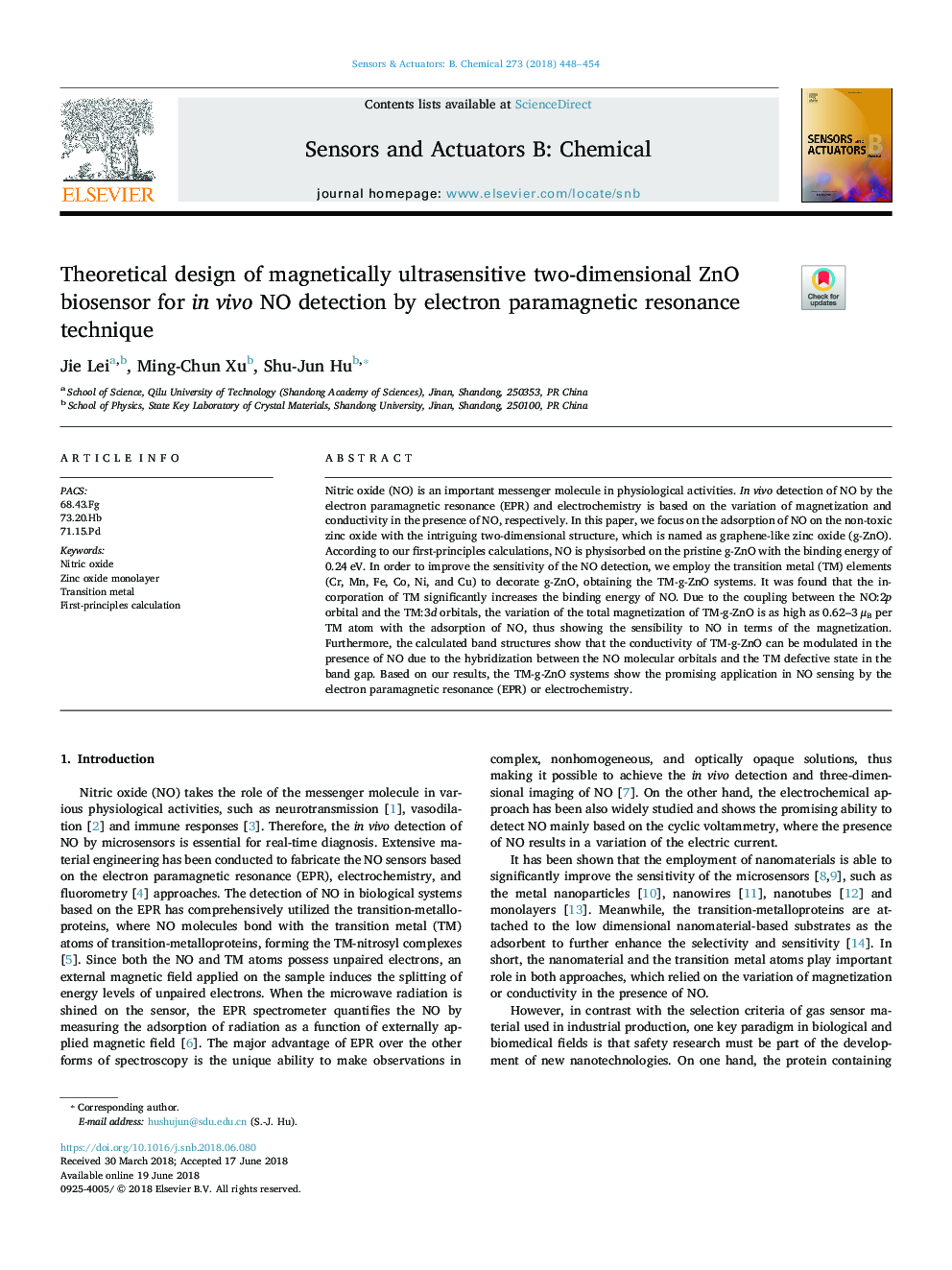| Article ID | Journal | Published Year | Pages | File Type |
|---|---|---|---|---|
| 7138795 | Sensors and Actuators B: Chemical | 2018 | 7 Pages |
Abstract
Nitric oxide (NO) is an important messenger molecule in physiological activities. In vivo detection of NO by the electron paramagnetic resonance (EPR) and electrochemistry is based on the variation of magnetization and conductivity in the presence of NO, respectively. In this paper, we focus on the adsorption of NO on the non-toxic zinc oxide with the intriguing two-dimensional structure, which is named as graphene-like zinc oxide (g-ZnO). According to our first-principles calculations, NO is physisorbed on the pristine g-ZnO with the binding energy of 0.24â¯eV. In order to improve the sensitivity of the NO detection, we employ the transition metal (TM) elements (Cr, Mn, Fe, Co, Ni, and Cu) to decorate g-ZnO, obtaining the TM-g-ZnO systems. It was found that the incorporation of TM significantly increases the binding energy of NO. Due to the coupling between the NO:2p orbital and the TM:3d orbitals, the variation of the total magnetization of TM-g-ZnO is as high as 0.62-3 μB per TM atom with the adsorption of NO, thus showing the sensibility to NO in terms of the magnetization. Furthermore, the calculated band structures show that the conductivity of TM-g-ZnO can be modulated in the presence of NO due to the hybridization between the NO molecular orbitals and the TM defective state in the band gap. Based on our results, the TM-g-ZnO systems show the promising application in NO sensing by the electron paramagnetic resonance (EPR) or electrochemistry.
Related Topics
Physical Sciences and Engineering
Chemistry
Analytical Chemistry
Authors
Jie Lei, Ming-Chun Xu, Shu-Jun Hu,
